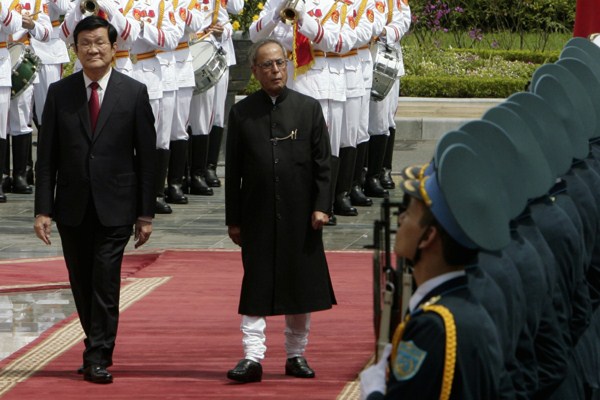On his visit to Vietnam in mid-September, Indian President Pranab Mukherjee assured his hosts that India would always be their “all-weather friend.” While some may read too much into the timing of that statement, delivered on the eve of Chinese President Xi Jinping’s trip to India, agreements signed by India and Vietnam on energy and defense during Mukherjee’s visit are certain to get Beijing’s attention. After all, they come at a time when China and Vietnam have renewed negotiations over their maritime disputes in the South China Sea and as India pushes back against China’s plans for maritime expansion across Asia, including the Indian Ocean.
Among the seven agreements inked during Mukherjee’s visit, Vietnam offered new offshore blocks to India for oil and gas exploration. India agreed to expand training programs for the Vietnamese military and gear up exports to improve the Vietnamese navy’s maritime strike capabilities. The accelerated pace of deepening India-Vietnam ties is part of Prime Minister Narendra Modi’s new dictum of actually “acting East,” not just “looking East.” India’s need to diversify its energy sources and wean itself off Middle Eastern oil has made it determined to ensure freedom of navigation in the Pacific, which will increasingly serve both as a transportation channel and source for future Indian energy imports.
The highlight of Mukherjee’s trip, for New Delhi, was the letter of intent between India’s ONGC Videsh Limited (OVL) and Vietnam Oil and Gas Group (PetroVietnam) to explore the seven new offshore blocks. Even if only three of the blocks turn out to be viable, they would still represent a significant rise in India’s investment stakes in Vietnam, which currently stand at just under $1 billion. Both sides seem eager to jumpstart their economic relationship by focusing on hydrocarbons and related sectors such as petrochemicals and textiles, to at least double bilateral trade to over $15 billion by 2020.

